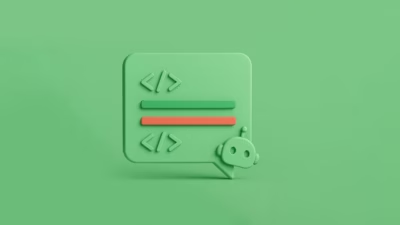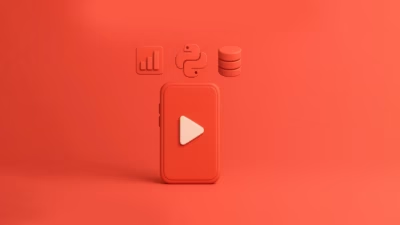I was mid-scroll through a very convincing Reddit thread titled something like “The Only Data Science Roadmap You’ll Ever Need” when it hit me:
I had six different tabs open. Each promised the ultimate plan.
Each looked completely different.
And I hadn’t learned a damn thing yet.
Sound familiar?
If you’re anything like I was — excited, overwhelmed, wondering if you should download 47 Coursera courses before breakfast — you don’t need another bloated “roadmap.”
You need a real plan, built for your goals, your pace, and your sanity.
Let’s build it together.
Step One: Forget the Buzzwords (For Now)
Here’s something nobody said to me early enough:
You don’t need to immediately know what “recurrent neural networks” or “unsupervised random forest clustering” are. Those flashy terms are dessert. You need dinner first — something hearty and basic that actually nourishes your brain.
When I first tried learning data science, I got seduced by all the fancy-sounding models and trendy AI headlines. I tried building deep learning models before I understood what a for-loop was.
Spoiler: I crashed. Hard.
If you’re starting from scratch, start painfully simple:
- How data is structured
- How programming logic works
- What “analysis” actually means
Trust me, nothing’s cooler than eventually understanding the wild stuff because your foundation is rock-solid.
Quick tip: If you see a term you don’t understand while studying, don’t chase it down the Wikipedia rabbit hole immediately. Bookmark it and move on. You’ll circle back.
Step Two: Pick Your Starter Stack (Without Getting Stuck)
When you say you want to learn “data science,” you’re actually signing up for a pretty big buffet:
There’s programming, statistics, math, machine learning, data engineering, visualization, storytelling…
It’s like saying “I want to be a chef” and realizing that means butchery, pastry, sauce work, plating, and oh yeah, cleaning a million dishes.
So what should your plate look like first?
Here’s a starter “meal” I wish someone had cooked up for me:
- Programming Language: Python (start here unless you have a special reason for R — trust me)
start here — this guide on key Python libraries is a solid launchpad. - Data Handling: Pandas (the library, not the animal — though pandas are cute)
- Visualization: Matplotlib and Seaborn
- SQL: Because no matter how sexy your machine learning model is, someone’s gonna ask, “Can you just pull this from the database?”
New to SQL? Learn the basics you’ll actually use on the job.
That’s enough. Seriously.
Resist the urge to download TensorFlow, Pytorch, XGBoost, and a Graph Neural Network package on Day 3. That’s like buying DJ equipment before you learn how to plug in a speaker.
Step Three: Build Around Projects, Not Chapters
I lost months trying to “finish” entire courses before touching real data.
Bad move. My brain was stuffed with theory and starved for experience.
What works better?
Pick tiny projects that force you to use what you just learned. Projects don’t have to be massive or original to count. In fact, the cheesier and more repetitive, the better at first.
Examples that saved my butt:
- Cleaning messy CSVs about my favorite bands
- Scraping weather data for my hometown
- Visualizing movie ratings over time
- Building a “guess the number” Python game for my nephew (he still crushed it, 4-year-olds are ruthless)
Every small project builds intuition faster than 10 hours of video lectures.
Mini truth bomb: No recruiter cares if your first project was analyzing “Avocado Prices 2016–2020.” They care that you showed you can load data, wrangle it, and tell a story with it.
Step Four: Layer in Math (But Don’t Panic)
You’re gonna hear two extremes:
- Camp 1: “You need a PhD in math to be a real data scientist!!”
- Camp 2: “You can just Google everything and pray.”
Reality, as usual, lives somewhere in the messy middle.
If you hated math in school (raises hand 🙋♂️), you might dread this part. But good news: early on, you don’t need terrifying math. You need to understand what the math means, not necessarily grind through proofs. Here’s a breakdown of how much math you actually need for data science.
Start here:
- Statistics: Mean, median, variance, standard deviation, distributions
- Probability: Basic concepts like independent events and conditional probability
- Linear Algebra: Vectors, matrices (just enough to understand why dimensions matter)
- Calculus: Only very light intuition — what’s a derivative, what’s an integral, why do we care?
When I learned just enough math to understand why a logistic regression curve looks the way it does, a hundred foggy concepts clicked. Suddenly, machine learning didn’t feel like magic. It felt like math telling a story.
Step Five: Make a Real Timeline (and Forgive Yourself)
Here’s what almost nobody admits:
Your learning plan is going to break.
You’ll fall behind.
Life will happen.
You’ll open Jupyter Notebook one night, stare blankly for 20 minutes, and slam your laptop shut in defeat.
It’s okay. It’s part of the process.
But you can set yourself up to bounce back faster by doing two tiny things up front:
- Set rough checkpoints. Example:
- Month 1: Python basics + small project
- Month 2: Pandas + SQL + small project
- Month 3: Visualization + basic stats
- Month 4: First portfolio-worthy project
- Build in catch-up weeks. No studying allowed. Only review or breathe. Trust me, you’ll need it.
When I gave myself “grace periods,” I actually moved faster long-term. Otherwise, every missed goal turned into a guilt spiral — and guilt is a terrible learning companion.
Step Six: Start a Public Journal (Even if It’s Cringey)
This is my secret weapon, and it sounds way cheesier than it is.
I started a blog — hidden at first — where I just brain-dumped what I learned each week. Sometimes it was three sentences long. Sometimes it was full of broken code and typos.
Why bother?
- It forced me to explain things in my own words
- It built a habit of finishing thoughts, not just starting them
- It gave me something to show future employers (“Look! I struggle publicly!”)
You don’t need a blog. A Twitter thread, a GitHub repo README, a private Notion doc — anything where you talk about what you’re doing out loud — is gold.
(And yes, reading my early posts makes me want to melt into the floor. Growth, baby.)
Step Seven: Find a Human or Two
Self-study is lonely. No way around it.
And when you’re stuck on some stupid Pandas error at 11:30 pm, it helps to know you’re not the only one losing your mind over a missing semicolon.
I’m not saying you need a full-on study group (unless you want one). Just one or two “study buddies” — even virtual strangers you find through a Slack group, LinkedIn comment section, or random Twitter DMs — can make a huge difference.
If you can’t find a buddy? Try talking to future-you. I’m dead serious. I wrote “notes to future me” every time I solved a tricky bug. It’s hilarious and heartwarming to look back on — and weirdly, it felt like having a teammate.
Final Thoughts: Your Plan, Your Pace
Here’s what I wish someone had told me when I first Googled “How to learn data science”:
You don’t need to sprint.
You don’t need to master everything before you start anything.
You just need to keep moving.
Build a plan that feels just a little ambitious — not a crushing burden. Adjust it when real life smacks you sideways. Laugh at your past bugs. Celebrate tiny wins.
And never, ever, measure your progress against someone else’s highlight reel.
You’re building something way cooler than a perfect resume.
You’re building proof to yourself that you can learn anything.
TL;DR Quick Tips:
- Start stupidly simple. Programming + basic data handling.
- Learn by tiny projects, not by finishing courses.
- Layer math slowly, only as needed.
- Plan catch-up time.
- Talk about your journey out loud — to others or to your future self.
- Don’t let comparison steal your momentum.





